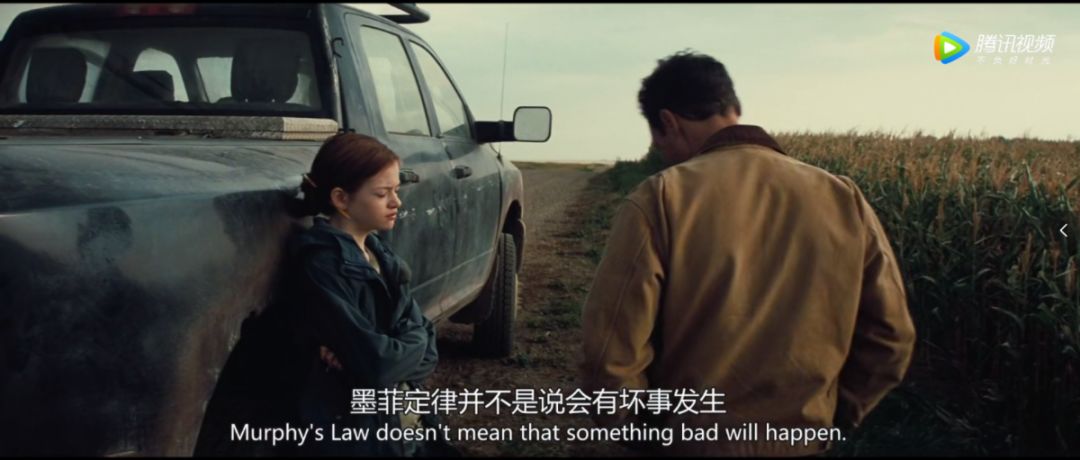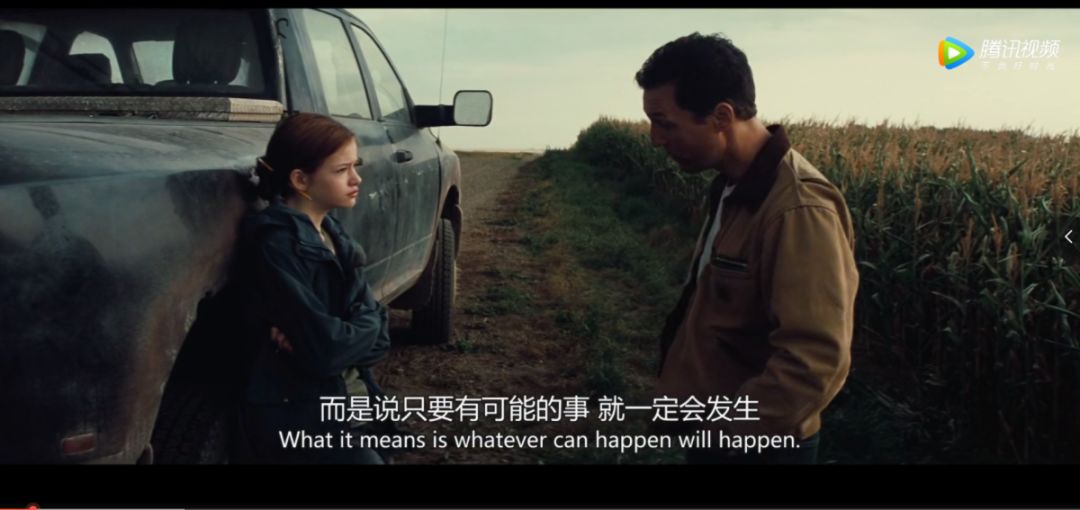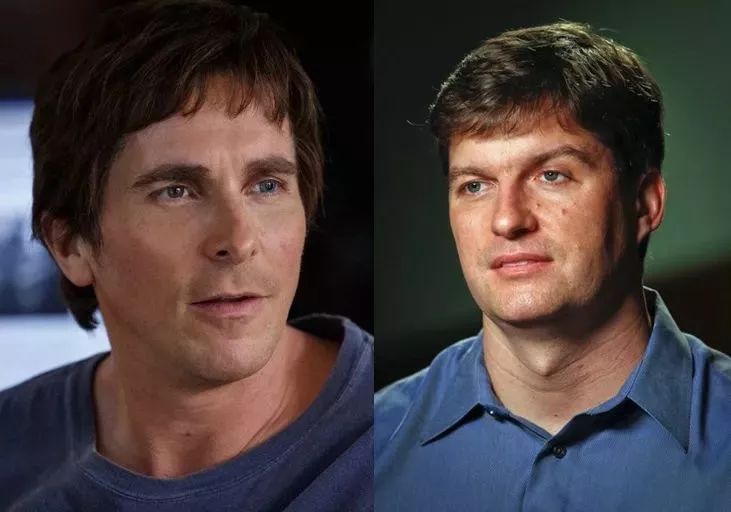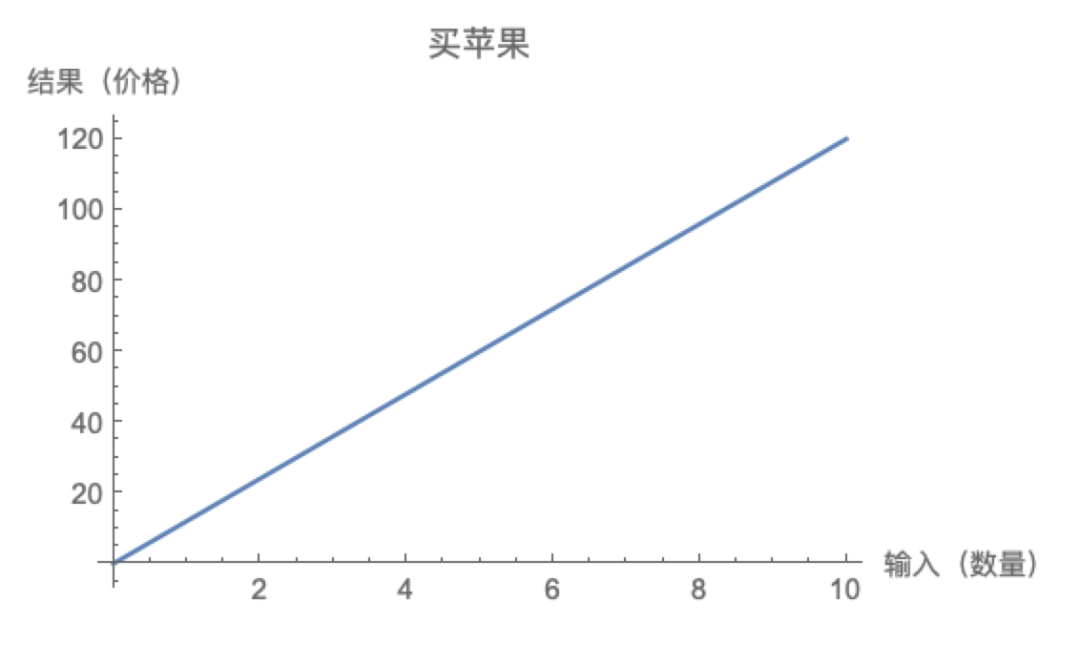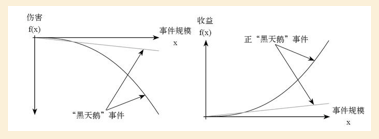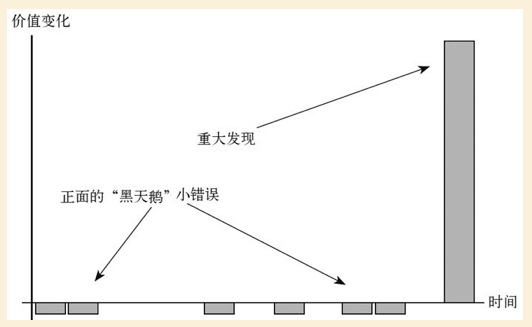The principle behind the “small blog”.
Editor’s note: This article is from WeChat public number “Lonely Brain” (ID: lonelybrain)< /a>, author | old meta is in Canada.
Is there really a big deal?
Yes.
But not the following.
First, not a lottery ticket;
Second, not gambling;
Third, not even All in for news stock or bitcoin.
What the hell is that?
This article will reveal a secret to you:
Some small probability events can be superimposed into high probability events, and the special option that the event has because of “small probability” will bring opportunities to make big money.
It’s not enough to have this secret. You need a “second-order” guide:
Good bets require a shelter from a convex curve.
The above two are the so-called small probability “ alchemy“.
We think about it backwards, looking at an example of a very small probability but a big loss.
Please see the title.
The surviving blue and white porcelain
Ming blue and white porcelain is very valuable. For example, in the Ming Yongle period, the blue-and-white shoulder-folded flower-flowered plum bottle (36.5 cm high) was sold in 2011 for HK$168.6 million.
We assume that the probability of a blue-and-white disk being broken by a miss in a year is 3%.
If the Ming Dynasty Zhengde years (about 500 years ago) produced 10,000 blue and white unicorns, how many are there?
(The title comes from “Probability Theory” by He Shuyuan)
If you don’t calculate it, you can easily estimate how many Zhengde blue and white unicorn disks are there?
Write down your estimated number and see the answer.
The calculation method is as follows:
First step, first calculate the probability that a blue-and-white disk will not be broken.
I am in the previous article.
Why really smart People are probabilistic masters? (Getting Started with Zero Formula)
The method of calculating such problems is introduced.
The probability of not being broken for 500 years p=(1-0.03) of the 500th power = 2.43 times the negative seventh power of 10.
The probability of being broken q=1-p=0.999999756
Second Step, calculate the probability that 10,000 blue-and-white discs will not be broken.
The probability that 10,000 blue-and-white discs are broken is the 10,000th power of q = 0.99757
The probability that these 10,000 plates still survive today is 1-0.99757=0.00243.
In other words, today, there is a probability of 2.43 per thousand to see this blue-and-white disk.
If the original (Zhengde Zhengde) produced 5 million blue and white plates, how many will be left today?
The answer is: less than one.
Do you have a word in your mind:
The broken thing will break sooner or later.
Isn’t this the Murphy’s Law?
Murphy’s Law means: “Whenever something goes wrong, it will definitely go wrong“.
There are two prerequisites for the establishment of Murphy’s Law:
1, probability greater than zero;
2, the time is long enough (that is, the sample is large enough, whether it is time or space.)
Like the example of the blue-and-white disk above, the probability of breaking each year is only 3%, and there are 5 million, but after 500 years, there is no more.
I call it “complexity of probability“.
The original sentence of Murphy’s Law is: If there are two or more ways to do something, and one of the choices will lead to disaster, then someone will make this choice.
“Murphy’s theorem” (English: Murphy’s theorem) There are four aspects to the content:
One, nothing seems so simple on the surface;
Second, everything will be longer than you expected;
Three things will go wrong;
Four, if you are worried about a certain situation, then it is more likely to happen.
Murphy’s Law seems to be the secular version of the second law of thermodynamics. As one of the three basic laws of thermodynamics, the second law of thermodynamics expresses the irreversibility of thermodynamic processes:
The isolated system spontaneously moves toward the thermodynamic equilibrium direction—the maximum entropy state—and, similarly, the second type of perpetual motion It will never be possible.
5 million blue-and-white discs are inevitably broken one by one in 500 years. It seems that Murphy’s law and entropy increase are essentially one thing.
The entropy is used to interpret the plate from the current orderly state (good plate) to the disordered state (broken plate).
From the perspective of investment, there are many laws derived from this:
- Meng said: Things that can’t be exercised forever will stop sooner or later;
- 巴Fett said: You have to buy a company that can run a fool, because all companies will fall into the hands of fools sooner or later.
If it is “irreversible” from order to disorder, why can humans multiply and evolve on Earth?
We will drop this question first and jump to the next section.
Let’s revert the topic back:
Since the small probability event cannot be avoided when the sample size is large enough, then we will be able to make a lot of money from the “blue-and-white disk will be broken sooner or later”.
Do you have such business opportunities in reality?
Yes.
The most vivid case is the true story told in the movie “Big Short.”
Batman plays a legendary Michael Bury in the investment world. He founded the Scion Fund in 2000. By 2008, 基 Strong> The net return rate after deducting expenses realized by the gold investor is 489%.
In the same period, the S&P 500’s return was only 3%.
How did Michael Bury do it?
It’s a blue-and-white porcelain that’s bet on “breaking sooner or later”.
Michael Bury lost an eye when he was a child, and his personality was so isolated that he might be better at thinking independently. He is a doctor and was originally an amateur investor.
Let me quickly summarize Michael Burley’s investment philosophy and style:
1, at first he was Graham’s “value investing” believer, and then may still be, but use it more freely;
2. Perhaps because the starting point is very low, he began to look for opportunities in stocks that are cheap, unpopular, small market capitalization, and poor liquidity;
3, his core strategy is to adhere to the principle of 100% compliance with safety margins. To find bargains that are seriously undervalued;
4, do not predict market trends, because the market is always irrational.
In summary, he is a value investor who has greater tolerance for probability fluctuations.
Talk about the story told in the movie. I made a simple summary:
Raiders for big shorts
Time: 2005-2007.
Opportunity: In 2005, it was found that the US mortgage repayment record was bad and the default rate was rising.
Bet: The gambling property bubble will burst and short the subprime mortgage.
Bet: CDS. If you lose 1.5% of the premium every year, if you win, you will earn 30-50 times the premium.
Process: Since the betting began in 2005, the fund has been retraced in 2006 and suffered.
Results: In 2007, the subprime mortgage crisis broke out and made a big profit.
Let’s imagine this:
There is a 200 million Ming Dynasty blue and white plate, which is shown by a local tyrant in the living room at home. Once you went to his home to find a guest, he found that there were three bear children in his family. Every day, he played a lot of troubles and often broke things. It was useless for parents to swear.
You think, although the owner is very careful, the plate will be destroyed by the bear children in the morning and evening.
You estimated it in your heart:
- The probability of a dish being shattered in one year is about 30%;
- So the probability of not being broken in two years is (1-30%) ✖️ (1-30%) = 49%;
- In other words, the probability of being broken in two years (1-49%) = 51%.
So, you said to the owner: Let’s cooperate, I will pay to help you buy insurance for this plate. If something goes wrong, we will pay half of the money we paid.
It’s probably the meaning of this (we don’t “stick” the rationality and details of this fake story.
Back to “Big Short”, even if Michael Bury predicts that the subprime mortgage crisis will happen, who will give him a small bargaining chip?
It’s really there.
This tool is CDS (Credit Default Swap): It is equivalent to buying insurance for someone else’s house. If you lose money, it is yours.
CDS is likened to “insuring a house that the fire is about to engulf, and the house is someone else’s home.”
Like the story of the blue-and-white disk that I made above to help local tyrants buy insurance.
CDS rates are as long as 1.5% per year and contracts can be as long as 30 years.
Using our probability calculation above, this game that looks like gambling has a winning percentage close to 100%, and the risk of bursting is small..
Look, this is not like an outsider version of the “Russian Turntable Game”:
A group of people are playing Russian turntable games, and everyone shoots their heads with a revolver with a bullet.
You sit next to you and bet you can earn 500,000 as long as someone is shot, but you have to pay a hundred dollars for each guy who shoots himself but doesn’t shoot.
The secret inside is very simple:
1, no matter how small the probability, as long as you play, someone will be shot;
2, the price you pay is very small, and you get a lot of rewards.
You might say, why is there such a pie in the world?
The problem is that when a pie appears, very few people think it’s a pie.
This is the same as Columbus found the New World.
Let’s analyze it:
First: The first to recognize a pie is actually a very difficult thing.
How did our protagonist Michael Bury discover the pie?
He read hundreds of mortgage bond specifications, each with hundreds of pages.
It is said that he is the first person to really read these complicated documents in addition to lawyers.
SecondIt’s a tormenting process from finding a pie to eating it.
From the bet to the blue-and-white disk was broken, Michael Burley waited for three years. In the middle of this, because of the sharp withdrawal of the fund in 2006, he was devastated by investors, and the average person has long been unable to continue.
Even if he later proved that he was right, the investors redeemed early and did not let him create a bigger miracle.
Investing is like this. Even if the pie is in front of you, people may not see it clearly.
Doubt 1:: Slowly, we don’t always hear that we want to bet on a high probability event?
Doubt 2: Shouldn’t we stay away from short selling and financial derivatives?
What is the difference between a bet and a gambler if you bet on a small probability event?
For this problem, it needs to be analyzed from two angles to have a more intuitive perception.
Angle 1: Some small probability events will be superimposed into large probability events.
In the above, we have done two calculations in this area.
Angle 2: Overlay (or say “Time”) is costly.
With a slightly more general description, Things with negative expectations cannot be superimposed into positive expectations.
This is why the harder the casino loses money.
In the example of “Big Short” above, Michael Bury’s cost is a “positive expectation” for a 30-50x expected return even if it is superimposed for 10 years.
When a person spends a few dollars to buy a lottery ticket, it seems that the cost is very low, but after years of superimposition, the probability of winning with a very small probability is still very small, and it is still a “negative expectation”.
What matters is the expectation, not just the probability.
Combining the above two perspectives, the secret lies in:
The first thing with a small probability becomes a high probability event as time goes by. What you have to do is calculate the time cost of paying and calculate the expected value of the bet accordingly.
The reason is simple, but even professional investors often go here.
I remember a foreign futures expert a few years ago, very accurately predicting the trend of gold. However, before the prophecy came true, he had already exploded.
Even if it seems to be right, even if it is only a little worse, it is gambling.
When Keynes summed up the lessons of losing money, he said:
“The time for the market to continue irrational is longer than the time you stay in bankruptcy.”
In 1965, the 90-year-old but unruly Jeanna Calman signed an agreement in France to sell his apartment to his lawyer at a low price. The price of the apartment at the time of the transaction was equal to 10 years of living expenses.
Why is the price so low? It turned out that this is a gambling agreement. The lawyer agreed to pay her monthly living expenses until her death, which is sometimes referred to as a “reverse loan”.
The lawyer was 47 years old that year.
However, Carman has lived for a long time.
The lawyer died of cancer in December 1995 and lived 78 years old. And his will continues to pay for the cost of living in Calman.
Two years later, the 122-year-old Karman was born.
(22-year-old Carl Mann, 1897 )
The key word in Taleb’s book on Anti-Vulnerability is:
Asymmetry.
- Many people who always maintain their correctness are mostly vulnerable.
- Those who can get stronger and stronger from mistakes are anti-fragile.
Talub said that his job is to link the following four elements with a basic asymmetric structure:
Vulnerability is equal to losing more than it is obtained, equaling that the unfavorable factor is more than the favorable factor, that is, equal to the (unfavorable) asymmetry.
Anti-fragility is equal to getting more than lost, equal to more favorable factors than unfavorable factors, that is equal to (favorable) asymmetry.
How to achieve this kind of anti-vulnerability?
The scheme given by Taleb is:
Barbell (or bimodal) strategy.
He cites examples:
- The wife in monogamy achieves this transformation by marrying accountants and then stealing love with rock stars.
- If a writer can engage in a leisure job that has nothing to do with writing activities during the day, his work will be better written.
Positive saying:
If your 90% of your funds are held in cash (assuming you are not affected by inflation), or stored in a so-called “value-preserving currency”, the remaining 10% of the funds are invested For securities with high risk or high risk, your loss cannot exceed 10%, and your income has no upper limit.
Conversely, if someone puts 100% of the money into so-called “medium” risk securities, he is likely to suffer a devastating risk due to calculation errors.
Therefore, the barbell strategy compensates for the problem that the risk of rare events is unmeasurable and susceptible to misestimation, that is, the maximum loss of the financial barbell strategy is known.
Comparing with the description of the seriousness, I would rather agree with Taleb’s views on writers.
I can’t imagine myself becoming a professional writer, although I always say that I am a “Writer” every time I go back to Canada to get into the customs. (This will save a lot of time).
Back to the “small probability” theme of this article, Taleb’s barbell structure is actually a bit of a problem. Although this structure actually provides a more universal “anti-fragility” framework.
I am concerned about the 10% “Make Big Money” part.
Thales’s story takes into account my theme and Taleb’s claims.
As a philosopher, Thales faces two kinds of secular pressures, one is to prove his wisdom, and the other is to prove his “ability.”
This is not a problem for philosophers, until one day, he was tired of the business partners who satirized what he called “the ability of people to do business, others to study philosophy.”
I understand Thales’s feelings very well. For someone who looks like a useless student, in some boring business social situations, someone wants you to show the balance of bank deposits.
Other times, for example, in a public event that I rarely participated in, someone asked, “Why is your public account receiving advertisements, and you are not very short of money.”
If the skeptic knows that I will push off nearly a hundred “cooperative ads” every month, and the price of each ad, his “only for others’ cleanliness requirements” may be even more mad.
The philosopher Thales did an amazing thing:
He paid a down payment and rented seasonal rights to all olive oil presses near Miletus and Chios at very low rents.
This strategy is consistent with the previous case in this article, taking advantage of the favorable asymmetry.
Thales buys an “option” that is the power to rent a machine.
The result: the olive harvest was very good that year, and the demand for the olive oil press was greatly increased. He allowed the press owner to sublease the machine according to the conditions he had opened, and made a profit from it.
What if the olive harvest is not good? Losses are also limited.
Thales, who made a big profit, returned to the world of philosophy.
The advantage of proper wealth is to maintain the independence of thinking, but not dragged by wealth (this is the key to Stoicism).
Because the pure money itself is fragile.
Asymmetry is a “non-linear” form.
“Linear” is easy to understand. If you are doing a smooth job, earning 10,000 a month, 60,000 a year, 120,000 a year, this is linear: scale up, the future is a straight line that seems to be able to look to the end.
Another example is that you buy apples in pounds, which is also linear.
“Nonlinear” is divided into two types:
A curve that is convex and concave;
A curve that is concave and convex.
The second type of concave and convex is the curve of “anti-fragility” that we want to pursue.
For example, the story of the olive oil press mentioned earlier, the curve is as follows:
(This image is from Anti-Fraud)
We always say that friends who want to do time, it makes sense, but what is a friend of time?
In fact, most people don’t understand what it means.
Along with the previous topic, we need to talk about another important concept:
Convexity.
The thing with convexity is the friend of time.
The so-called “convexity”, also called convexity, is the convexity, which is a feature of bonds.
No matter what type of bond, there is a certain degree of “convexity”. Convexity is for investors, that is, “up and down.”
The greater the convexity, the faster it rises when it rises; the slower it falls when it falls. vice versa.
So the greater the convexity of the bond, the lower the investment risk.
Convexity is anti-fragile, while concavity is fragile.
The following is a common example of a concave:
The process of drinking is as above:
Starting to drink more and more cool, when it reaches a certain amount, it reaches its peak. If you drink again, you will be guilty and even sent to the hospital.
Let’s compare the two curves:
The left side is concave and the right side is convex.
Convexity has anti-fragility. PossibleThe pain is limited, and the potential benefits are great.
The fund manager who shorts the subprime mortgage in “Big Short”, the philosopher who does the extra olive oil, uses the convex curve on the left side of the above picture.
What about the left side? Drinking, getting along with bad people, gambling, for the wealth you can’t use to go to the bottom of the house you can’t afford, is concave and fragile.
The convexity on the right side can benefit from the black swan event in the positive direction;
The concave on the left is vulnerable to black swan and even fatal blows.
Under the convexity curve, uncertainty is your friend;
Under the concave curve, uncertainty is your enemy.
And “time” as a friend?
We analyze three conditions:
1, Linear: Time is not salty or light for you;
2, Concave: Time is your enemy;
3, Convex: Time is your friend.
In a convex situation, you can’t make a lot of mistakes, it’s like a time of grace. For example, three years after Michael Burry’s bet, most of the time it seems to be “mistaken”, but once correct (high probability will happen), it will still achieve overall performance.
Taleb concludes this:
If you have favorable asymmetry, or positive convexity (the option is a special case), in the long run, you will do quite well and perform better than the average in uncertain situations.
The stronger the uncertainty, the more selective the effect, the better your performance. This attribute is very important to life.
About “convexity”, let’s jump into another area:
Entrepreneurship and venture capital.
As everyone knows, entrepreneurship is a life of nine, and the venture capital is not stable.
The success of entrepreneurship and venture capital projects is a small probability event.
How do people who make venture capital make big money from it?
In a book about entrepreneurship and venture capital, Silicon Valley Entrepreneurship, three concepts have emerged:
1, convexity;
2, Grand Slam;
3, reverse thinking.
CreationWhat is the secret of industry and venture capital?
Not a plan, not a design, not a well-thought-out, but a mimic of the chaos in the evolution of nature, capturing the emergence of new species in a random process.
As written in Anti-Vulnerability:
Nature knows how to be selective, it shows how to replace wisdom with alternatives.
Talub wrote:
This is a trial-and-error mechanism similar to an option (fast failure model), also known as convex free exploration. Under this mechanism, the cost of error is low, the maximum loss is known, and the potential return is huge (infinite).
Michael Moritz of Sequoia Capital said that even a very powerful company had a lot of uncertainty at the beginning and the development prospects were not clear.
“We like people or projects that are not seen by everyone, and this has always been the way we do business.”
Why?
The reason is the same as Michael Burley’s investment philosophy:
The success of the venture capital business lies in the ambiguity of buying wrong pricing.
Marc Anderson said that for Airbnb, the usual idea of people used to be:
“Do people live in each other’s homes and don’t encounter a killer with an axe?”
So, those “do not look like the best ideas in the world” are actually more likely to be convex, because uncertainty is a friend of wise investors.
If there aren’t any factors that make startup ambitions seem crazy, the potential return on the project is unlikely to be a Grand Slam type, and the Grand Slam type is the key to investor success.
As Niels Bohr said:
The madness of your theory is an indisputable fact, but the key to our disagreement is whether it is crazy enough to have the right possibility.
The whole point of the art of venture capital is bold breakthrough ideas. The essence of a bold breakthrough idea is: bad prediction.
What should I do?
Howard Max said a famous saying: it’s hard to predict, but we can be prepared.
In particular, it’s about buying a portfolio that contains misplaced opportunities, rather than trying toTo predict an unpredictable future.
Where to find a convex opportunity?
Investors believe that the best place to find convexity is: where other investors or company founders ignore it.
This is the importance of “reverse investment thinking“.
However, in any case, the three powerful concepts of “convexity, grand slam, reverse thinking” still have to be put into a traditional cauldron, which is based on probability. Expected value calculation.
In 1993, Warren Buffett’s letter to shareholders explained the way to buy a portfolio that includes a convex opportunity:
“You can consciously invest in a project that involves risk – there is a high probability that it will cause loss or damage, but only if you believe that the probability weighted gain will be much higher than the probability weighting After the loss, and you can invest in several similar but irrelevant projects.”
Investment is difficult.
Investor Howard Max once said to Charlie Munger: “It is not easy to make money through investment. Anyone who thinks this is easy is stupid.”
In the 2008 subprime crisis, the big money was not the one-eyed god Michael Bury mentioned earlier in this article, but John Paulson.
- In 2007, his fund company earned $15 billion in profits, and Paulson’s personal income approached $4 billion.
- From 2008 to early 2009, he again brought $5 billion in revenue to the company and its customers, and he earned $2 billion.
- In 2010, Paulson was ranked 45th on the Forbes Global Rich List for $12 billion.
- In 2011, Paulson’s fund reached a peak of $38 billion.
However, Paulson seems to be unable to return to the heyday of 2007, and his average return fell back to 6.18%, with a loss of 9.88% in 2011. And it is during the rise of the stock market.
In particular, his big bet on the pharmaceutical company, Vanilla, caused huge losses.
Now, Paulson’s fund has shrunk to $8.7 billion.
May Paulson is too eager to prove himself.
He gambled three times in a row: the Internet bubble, the subprime crisis, and gold.
Or, he has produced his own abilities

